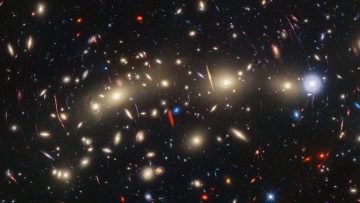Scientists really want to understand what happens when a star dies. Sure, we know that supernovas are triggered, and scientists have even watched dying stars explode into supernovas. But, we’re still learning about these cosmic objects. Now, the James Webb space telescope has captured new details about the Crab Nebula, one of the closest supernova remnants we have ever studied.
Located just 6,500 light-years away from Earth in the constellation Taurus, the Crab Nebula is one of the closest examples we have to study when it comes to the remains of a dying str. And it is a beautiful sight to look at, too.
While scientists have observed the Crab Nebula in the past using the Hubble space telescope, James Webb allowed them to view the nebula through infrared light, providing more details than we’ve ever seen within it before. In fact, with James Webb, we are finally able to make out the bright white center of the nebula’s pulsar.
According to a post shared by NASA, all you need to do to spot the pulsar yourself is to trace the wisps that follow a circular ripple-like pattern in the center to the bright white dot in the middle of the image. As you move farther from the core of the Crab Nebula, you can see the way that the filamentary dust edges and moves toward the neutron star’s location.
Scientists hope this image and other observational data captured by James Webb will help them answer questions about the Crab Nebula’s past as they analyze it more in-depth. They’ll also compare the new images and data with that gathered by Hubble almost 20 years ago. Further, the Hubble space telescope will take another look at the nebula in the coming year or so.
With all of this data, scientists are hopeful they’ll finally crack the mystery of the Crab Nebula’s past. And, if they do, it’ll leave some really intriguing data that we can contribute to our overall model of the universe going forward.








